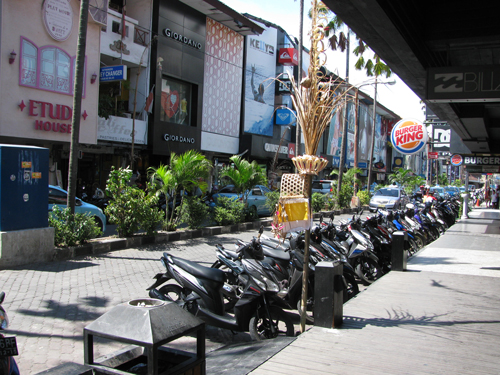If Asia is on your rader this year, then it’s important your approach to the region begins with understanding the norms of doing business in each market before you commit resources to entry. It could save you a lot of money.
The challenge is that getting the right information can be difficult and it’s definitely not a desktop exercise. You have to be there to truly appreciate what doing business in Asian markets is all about.
If you’re in the F&B sector, we recommend working through the following four-step check list.
Demand
In the markets we work in, imported food and beverage products are becoming increasingly popular. However, the immediate customer base is still relatively small when compared to Western markets and this, combined with price sensitivities, will have an impact on volume potential.
In most Asian markets, even highly developed ones such as Singapore and Hong Kong, the demand is geared towards well known ‘coca-cola brands’, rather than boutique products with no brand equity in the market. It’s a trait that’s very different to purchasing behaviour in New Zealand, where niche foods are very popular.
The reality in these markets is that big brands are a safe bet. Whether you’re in food service or retail, you’ll find that the purchaser is generally more willing to put their money on something they know and trust rather than take the risk on an expensive, unknown brand.
But having a realistic price position and being prepared to support sales with a solid marketing plan will go a long way towards countering these challenges.
Market entry costs
The media in New Zealand fuelled an uproar last year when a supermarket chain was accused of demanding seemingly unfair payments from their suppliers, ostensibly to prop up their bottom line.
Unfortunately, extracting fees is an art form in many Asian markets. If you want to get your product into the right retail channels you’ll need to be prepared to shoulder 70 to 100 percent of the entry costs.
Indeed, it’s well known in the industry that a major KPI for purchasing managers in large retail chains across Asia is the amount of fees they can extract from suppliers pitching to list their products on their shelves. Entry costs are so unfavourable in some cases that the products available to consumers are limited to only those brands from multinational corporations who are able to shoulder the fees.
Although entry fees are negotiable, retailer Listing Fees and compulsory Advertising and Promotion (A&P) costs cause many exporters to think twice about entering some markets.
Regulations and compliance–Halal
Halal is becoming increasingly important across Asia. If you are a food service supplier and have your sights set on supplying major accounts in Singapore, Malaysia or Indonesia, then your goods simply must be Halal certified. Many hotel restaurants have ‘Halal only’ kitchens and major restaurant chains such as McDonalds are Halal Certified.
Compliance
With the exception of Singapore and Hong Kong, most markets in the region have complicated food regulatory systems and complying with local regulations means that your products must be registered with the local FDA (Food and Drug Administration) or an equivilent. For example, in Indonesia and the Philippines it can take six to 12 months to get approved.
The documentation required from exporters for this process is significant, and even when submitted an application can be denied for reasons that are unclear.
What’s more, compliance procedures are often updated and can be open to interpretation. Extreme patience is required.
Price build
To grow a sustainable business, it is important that your products are priced competitively. Giving your distributor complete control of the pricing strategy can often result in a ‘margin grab’, leading to pricing that is neither sustainable nor competitive.
From the distributor’s perspective, they have a business to run and require a certain return on their investment. So to negotiate a realistic price position and demonstrate profitability takes skill.
Knowing what costs to expect along the value chain allows you to price your products appropriately and negotiate a fair deal with your trade partners. So it’s worth putting significant effort into your pricing strategy in advance of taking your product to market, because once presentations are made, it is very difficult to back track.
Ultimately, if Asia is on your radar for 2015 then human resource and financial investment are required to tap into this potentially lucrative region.
Cameron Gordon is Asia market director at Incite, a New Zealand owned export services firm with offices in Auckland and Singapore that manages business development and sales for a clientele of international F&B exporters in Southeast Asia, Hong Kong, South Korea and Taiwan. Email [email protected] or visit www.exportincite.com




